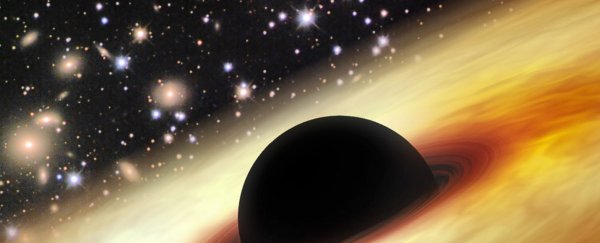Step aside regular black holes, astronomers have detected an ancient black hole that's so incredibly massive and luminous, it defies our understanding of the early Universe.
In fact its quasar, the shining object produced by a supermassive black hole, is 420 trillion times more luminous than our Sun - despite forming only around 900 million years after the birth of the Universe. This makes it the brightest object ever spotted in the ancient Universe. It's so impossibly bright that it's almost, well impossible.
"How could we have this massive black hole when the universe was so young? We don't currently have a satisfactory theory to explain it," the lead researcher, Xue-Bing Wu, from Peking University in China and the Kavli Institute of Astronomy and Astrophysics in the US, told Rachel Feltman from The Washington Post.
The quasar, known as SDSS JO100+2802, is located around 12.8 billion light years away from Earth, and was spotted by the Sloan Digital Sky Survey, before being verified by three Earth-bound telescopes.
Reporting in Nature, the team explains that for the black hole to reach such a massive size in less than a billion years, it would have been constantly sucking in interstellar mass at its maximum rate. But this doesn't fit with our current understanding of black hole growth, which states that the process is limited by energy that blasts out of the quasar as the black hole heats up.
Following that hypothesis, and also factoring in the limited amount of matter available in the early Universe, it makes it extremely difficult for scientists to explain how the supermassive black hole exists - and how it came to be 12 billion times more massive than our Sun.
"With this supermassive black hole, very early in the Universe, that theory cannot work," Fuyan Bian from the Australian National University, who was involved in the research, told Genelle Weule and Stuart Gary for ABC Science. "It's time for a new hypothesis and for some new physics."
But even though we're still not sure how the mega quasar is possible, it's going to be a useful tool for finding other objects in the Universe.
"This quasar is very unique. Just like the brightest lighthouse in the distant universe, its glowing light will help us probe more about the early Universe," said Wu in a press release.
Sources: ABC Science, The Washington Post
Read this next: The masses of black holes are more predictable than we thought
